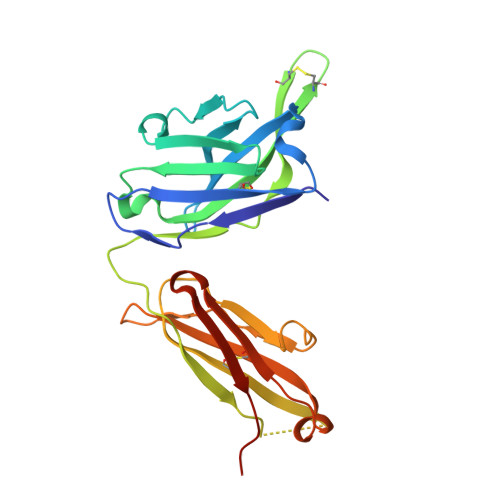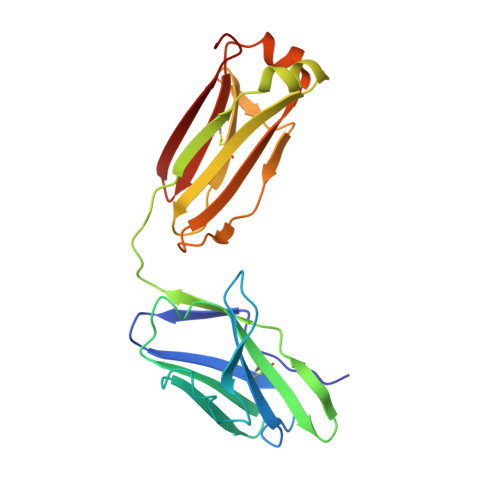Agonistic Human Antibodies Binding to Lecithin-Cholesterol Acyltransferase Modulate High Density Lipoprotein Metabolism.
Gunawardane, R.N., Fordstrom, P., Piper, D.E., Masterman, S., Siu, S., Liu, D., Brown, M., Lu, M., Tang, J., Zhang, R., Cheng, J., Gates, A., Meininger, D., Chan, J., Carlson, T., Walker, N., Schwarz, M., Delaney, J., Zhou, M.(2016) J Biol Chem 291: 2799-2811
- PubMed: 26644477
- DOI: https://doi.org/10.1074/jbc.M115.672790
- Primary Citation of Related Structures:
5BV7 - PubMed Abstract:
Drug discovery opportunities where loss-of-function alleles of a target gene link to a disease-relevant phenotype often require an agonism approach to up-regulate or re-establish the activity of the target gene. Antibody therapy is increasingly recognized as a favored drug modality due to multiple desirable pharmacological properties. However, agonistic antibodies that enhance the activities of the target enzymes are rarely developed because the discovery of agonistic antibodies remains elusive. Here we report an innovative scheme of discovery and characterization of human antibodies capable of binding to and agonizing a circulating enzyme lecithin cholesterol acyltransferase (LCAT). Utilizing a modified human LCAT protein with enhanced enzymatic activity as an immunogen, we generated fully human monoclonal antibodies using the XenoMouse(TM) platform. One of the resultant agonistic antibodies, 27C3, binds to and substantially enhances the activity of LCAT from humans and cynomolgus macaques. X-ray crystallographic analysis of the 2.45 Å LCAT-27C3 complex shows that 27C3 binding does not induce notable structural changes in LCAT. A single administration of 27C3 to cynomolgus monkeys led to a rapid increase of plasma LCAT enzymatic activity and a 35% increase of the high density lipoprotein cholesterol that was observed up to 32 days after 27C3 administration. Thus, this novel scheme of immunization in conjunction with high throughput screening may represent an effective strategy for discovering agonistic antibodies against other enzyme targets. 27C3 and other agonistic human anti-human LCAT monoclonal antibodies described herein hold potential for therapeutic development for the treatment of dyslipidemia and cardiovascular disease.
Organizational Affiliation:
From Therapeutic Discovery, Amgen Inc., Seattle, Washington 98119.




















